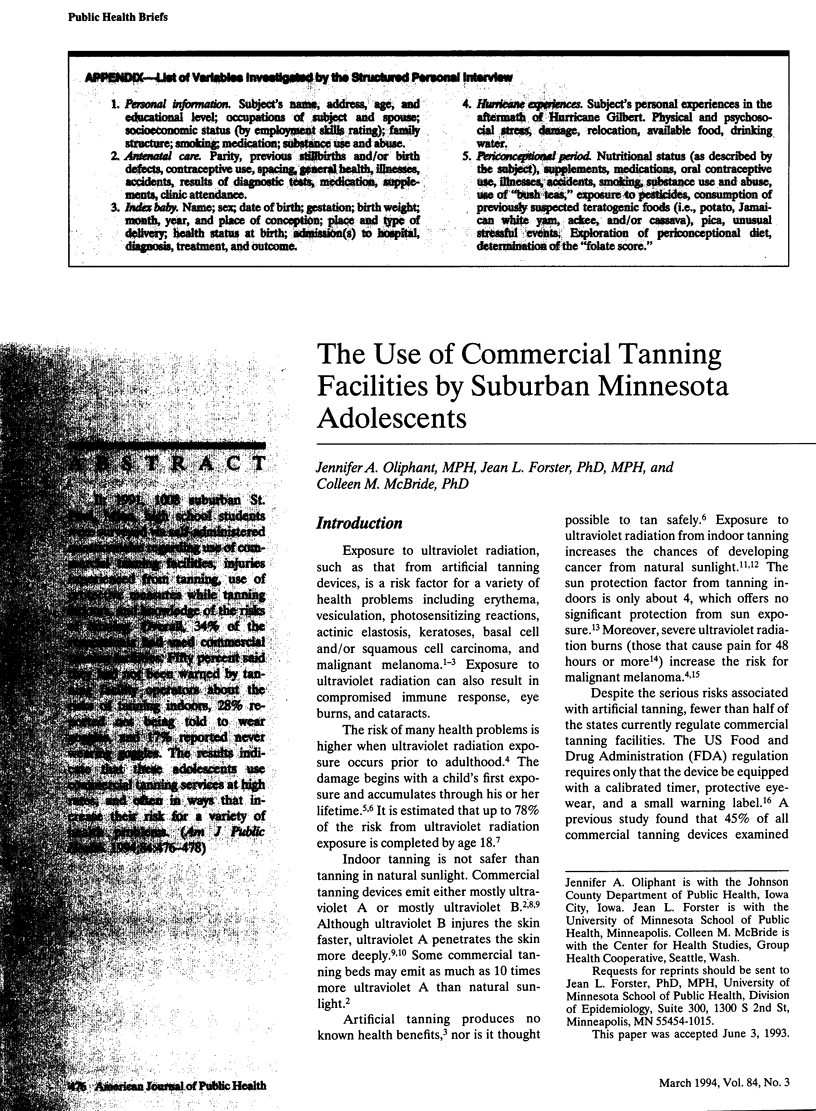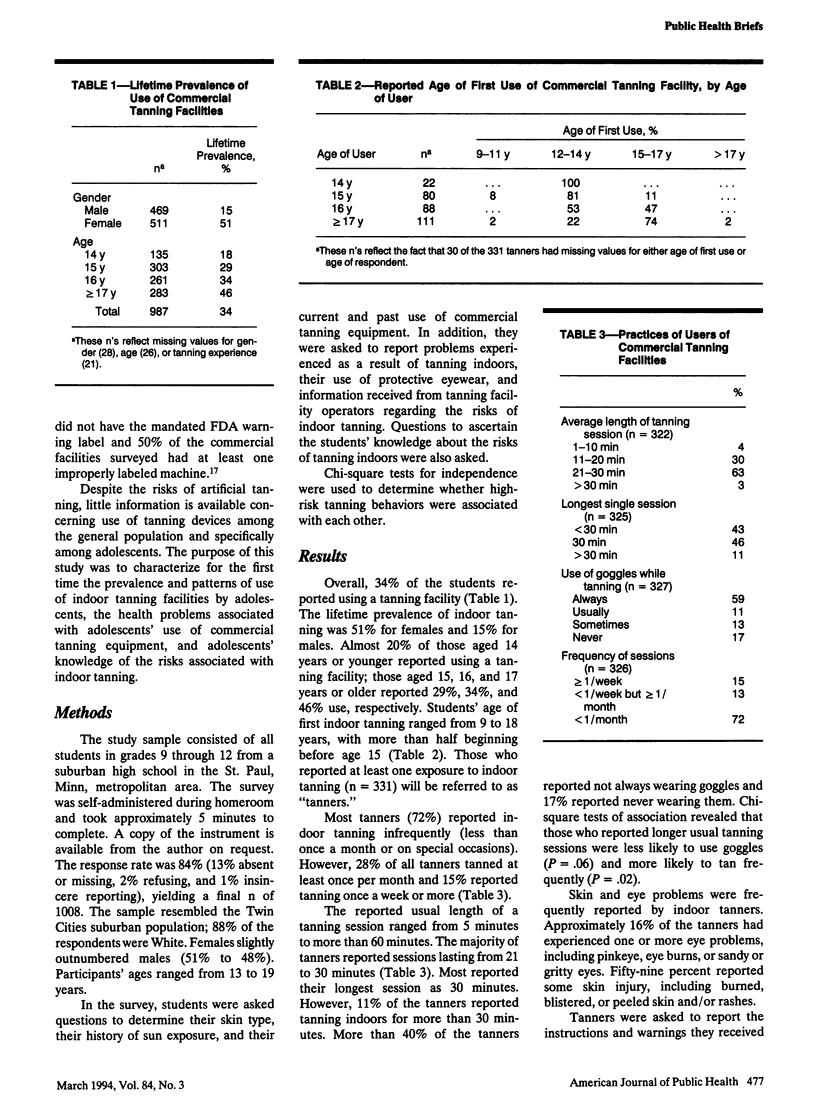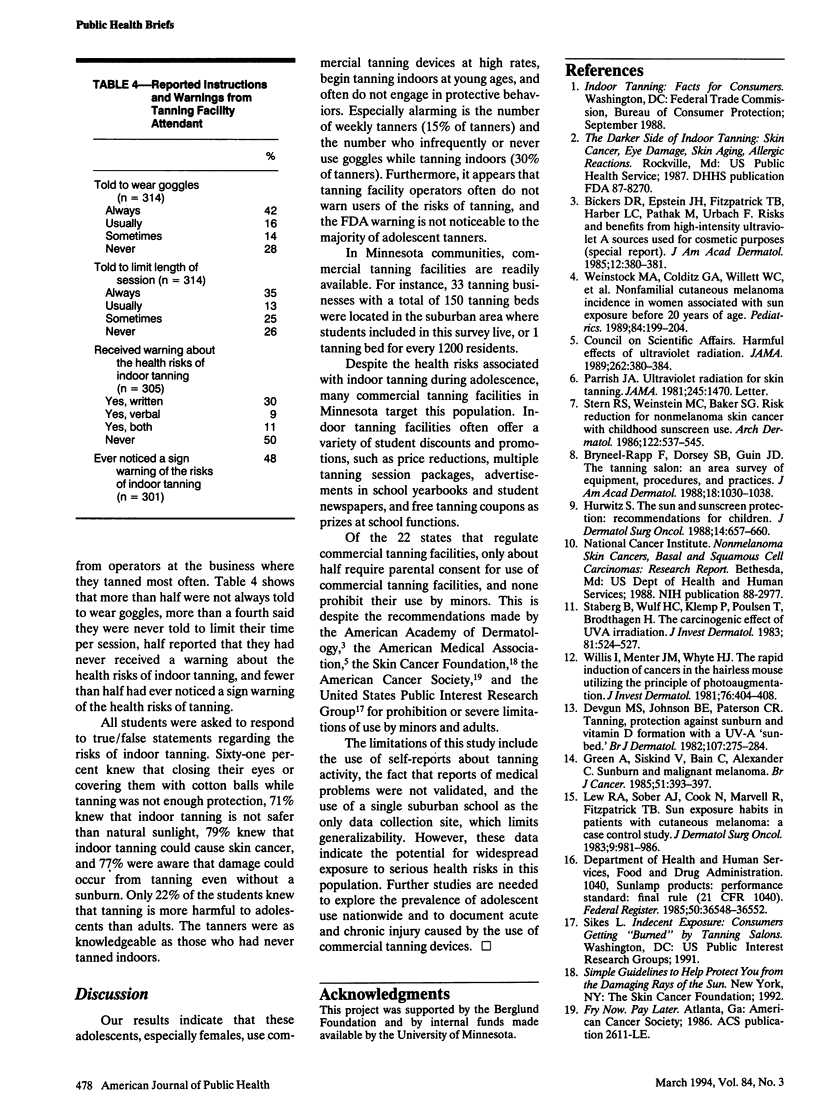Abstract
In 1991, 1008 suburban St. Paul, Minn, high school students were surveyed via self-administered questionnaire regarding use of commercial tanning facilities, injuries experienced from tanning, use of protective measures while tanning indoors, and knowledge of the risks of tanning. Overall, 34% of the respondents had used commercial tanning facilities. Fifty percent said they had not been warned by tanning facility operators about the risks of tanning indoors, 28% reported not being told to wear goggles, and 17% reported never wearing goggles. The results indicate that these adolescents use commercial tanning services at high rates, and often in ways that increase their risk for a variety of health problems.
Full text
PDF


Selected References
These references are in PubMed. This may not be the complete list of references from this article.
- Bruyneel-Rapp F., Dorsey S. B., Guin J. D. The tanning salon: an area survey of equipment, procedures, and practices. J Am Acad Dermatol. 1988 May;18(5 Pt 1):1030–1038. doi: 10.1016/s0190-9622(88)70100-0. [DOI] [PubMed] [Google Scholar]
- Devgun M. S., Johnson B. E., Paterson C. R. Tanning, protection against sunburn and vitamin D formation with a UV-A 'sun-bed'. Br J Dermatol. 1982 Sep;107(3):275–284. doi: 10.1111/j.1365-2133.1982.tb00357.x. [DOI] [PubMed] [Google Scholar]
- Green A., Siskind V., Bain C., Alexander J. Sunburn and malignant melanoma. Br J Cancer. 1985 Mar;51(3):393–397. doi: 10.1038/bjc.1985.53. [DOI] [PMC free article] [PubMed] [Google Scholar]
- Hurwitz S. The sun and sunscreen protection: recommendations for children. J Dermatol Surg Oncol. 1988 Jun;14(6):657–660. doi: 10.1111/j.1524-4725.1988.tb03396.x. [DOI] [PubMed] [Google Scholar]
- Lew R. A., Sober A. J., Cook N., Marvell R., Fitzpatrick T. B. Sun exposure habits in patients with cutaneous melanoma: a case control study. J Dermatol Surg Oncol. 1983 Dec;9(12):981–986. doi: 10.1111/j.1524-4725.1983.tb01051.x. [DOI] [PubMed] [Google Scholar]
- Nonaka S., Kaidbey K. H., Kligman A. M. The influence of UVA and visible radiation on acute damage by short-wave UVR (lambda less than 320 nm). J Invest Dermatol. 1983 Dec;81(6):524–527. doi: 10.1111/1523-1747.ep12522868. [DOI] [PubMed] [Google Scholar]
- Risks and benefits from high-intensity ultraviolet a sources used for cosmetic purposes. Photobiology Task Force of the American Academy of Dermatology. J Am Acad Dermatol. 1985 Feb;12(2 Pt 1):380–381. doi: 10.1016/s0190-9622(85)80075-x. [DOI] [PubMed] [Google Scholar]
- Stern R. S., Weinstein M. C., Baker S. G. Risk reduction for nonmelanoma skin cancer with childhood sunscreen use. Arch Dermatol. 1986 May;122(5):537–545. [PubMed] [Google Scholar]
- Weinstock M. A., Colditz G. A., Willett W. C., Stampfer M. J., Bronstein B. R., Mihm M. C., Jr, Speizer F. E. Nonfamilial cutaneous melanoma incidence in women associated with sun exposure before 20 years of age. Pediatrics. 1989 Aug;84(2):199–204. [PubMed] [Google Scholar]
- Willis I., Menter J. M., Whyte H. J. The rapid induction of cancers in the hairless mouse utilizing the principle of photoaugmentation. J Invest Dermatol. 1981 May;76(5):404–408. doi: 10.1111/1523-1747.ep12520945. [DOI] [PubMed] [Google Scholar]


